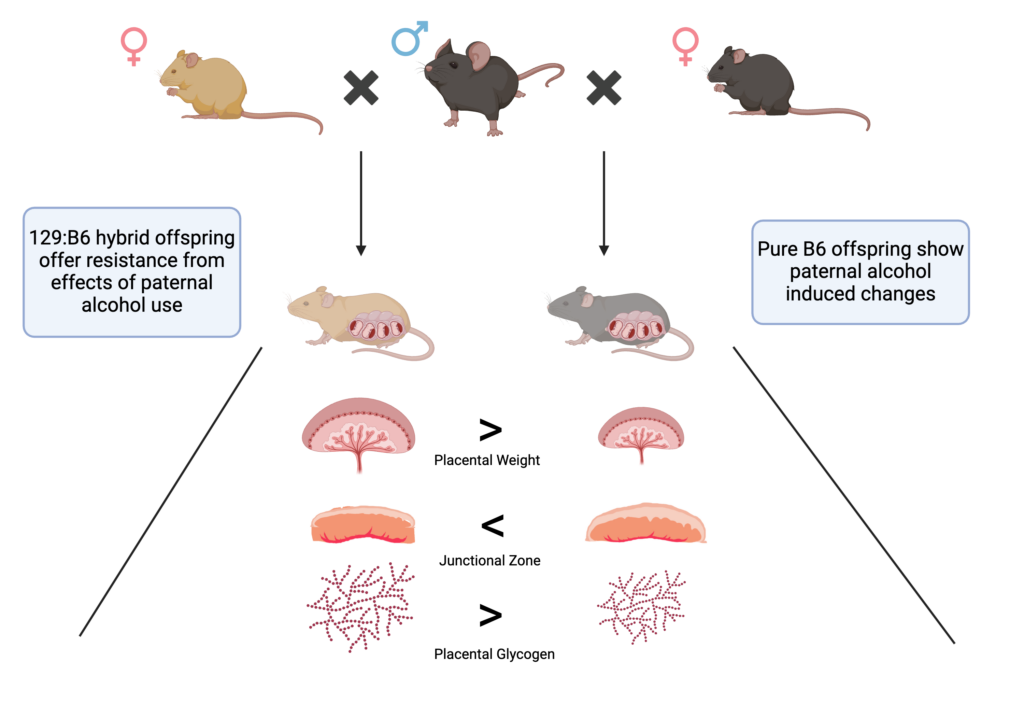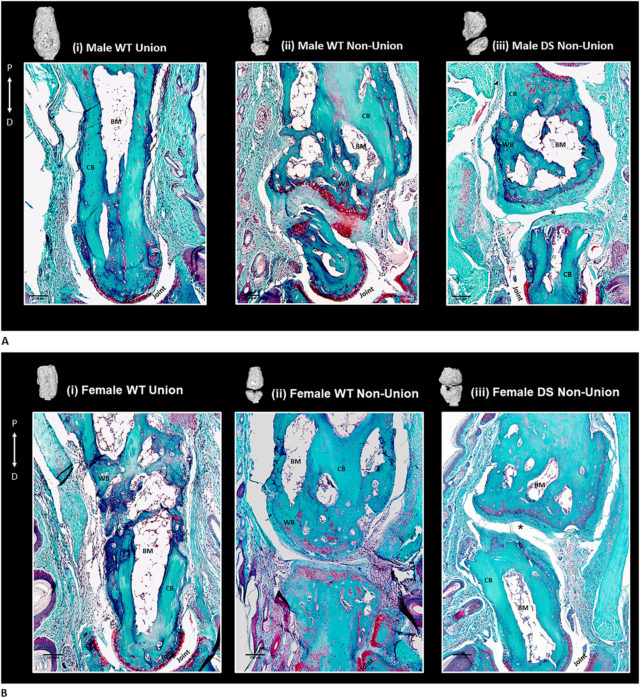By Sanat Bhadsavle | Ph.D. student in Biomedical Sciences

Fetal alcohol spectrum disorders (FASD) result from maternal alcohol consumption during pregnancy, causing developmental defects like fetal growth restriction, facial abnormalities, and neurological problems. The healthcare costs for FASD in the United States range from $926 million to $3 billion over a lifetime. While maternal alcohol consumption is a known cause of FASD, recent animal studies suggest paternal drinking before conception also contributes to FASD.
Most animal research uses inbred mouse strains (mice that are the offspring of the same parent DNA) because it is easier to control for genetic variables. However, inbred strains lack the level of genetic diversity present in the natural world, thus limiting their translation to human medicine. This study investigates FASD in hybrid mice — mice that are the offspring of two inbred strains and have greater genetic diversity — to replicate previously reported FASD phenotypes, including fetal growth restriction (small fetus) and placental overgrowth.
Placental overgrowth is when the placenta — a temporary organ formed during pregnancy that provides nutrition and oxygen to the fetus — increases in size and weight to provide adequate nutritional support to the growing fetus due to stressful situations. Prior studies in our lab showed placental overgrowth in offspring of alcohol-exposed fathers using the inbred C57BL/6J strain. This study used the 129S1/SvlmJ strain, which is prone to placental defects, hypothesizing that paternal alcohol exposure would heighten offspring sensitivity to placental anomalies.
Unexpectedly, hybrid offspring placentae showed a less severe phenotype than inbred models. Male offspring exhibited slight placental overgrowth, which was not seen in females. We found that genes that protect our cells from oxidative damage, — a form of cell injury that leads to DNA damage — were upregulated in the female placenta but not in males, suggesting these pathways may protect female babies against the effects of alcohol. Histological analysis revealed structural differences in hybrid offspring placentae compared to C57BL/6J mice, possibly explaining the observed protection.
Ultimately, this study found that hybrid mice strains do not behave similarly to inbred strains, which highlights the importance of genetic diversity and emphasizes the need to diversify mouse models to significantly enhance the relevance of animal studies to human health.

